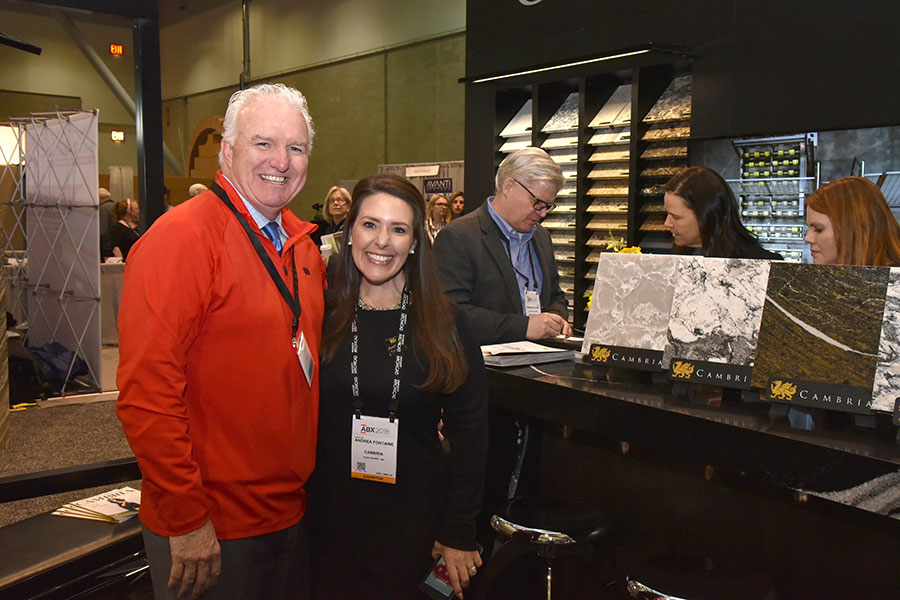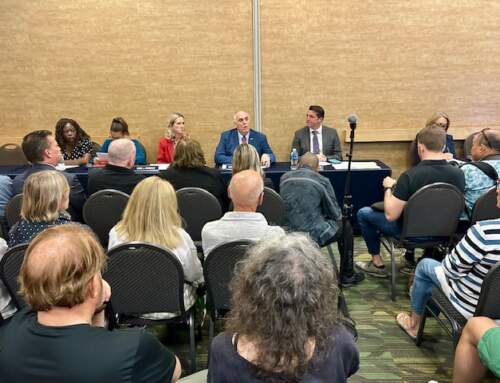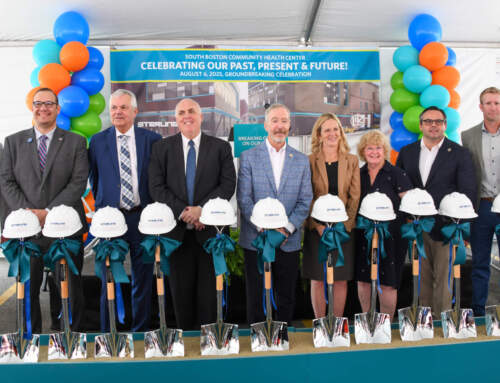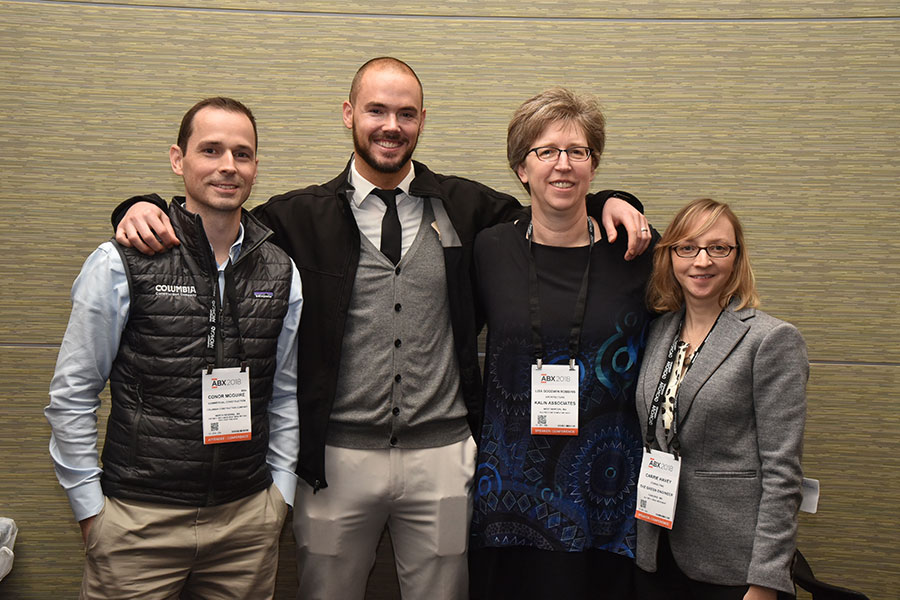
Connor McGuire, Steven Burke, Lisa Robbins Carrie Havey on Experts on Healthy Schools.
By Richard Campbell
This year’s ABX Conference showcased such depth in architecture, design, construction and innovation that the show’s program calling the event the “premier” forum in the field was no exaggeration. Running two full days at the Boston Convention and Exhibition Center this past Wednesday and Thursday, this is a traditional trade show with added educational workshops and special events that cover a wide variety of topics. Informa Global and Boston Society of Architects who produce the convention have partnered with an array of institutions. The show drew thousands from the industry and offered free high-end publications. Some publishers like Kathy Bush- Dalton of New England Home came to talk shop personally. Needless to say, interior designers, builders and architects got the royal treatment.
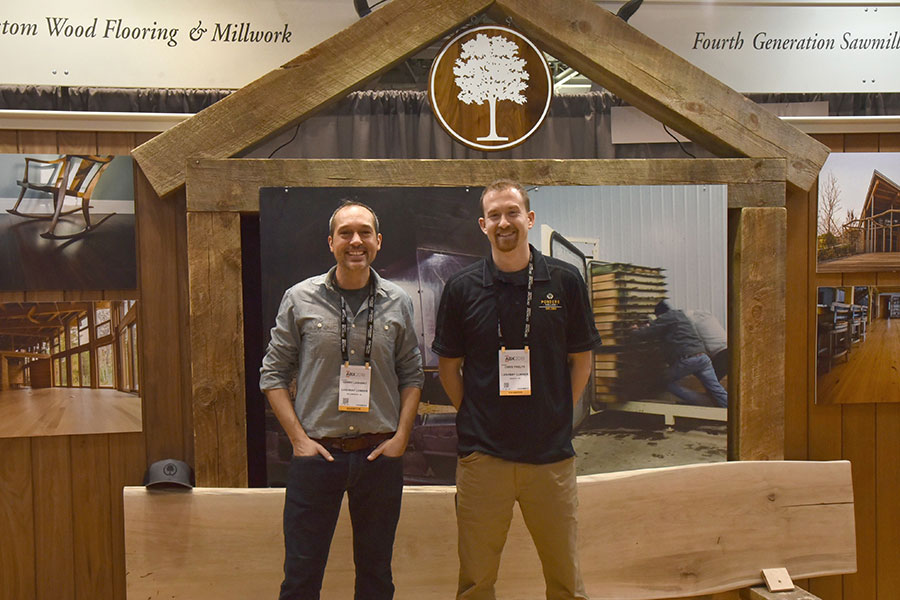
Gerry Lashway and Chris Phelps of Ponders Hollow
With over 300 exhibition booths featuring a dazzling array of materials and services for design; this was a hands-on networking event. The educational workshops seemed to be heavily weighted this year to climate resilience, and the convention featured alumni meetings of major architectural colleges in New England, as well as a special Women in Design Symposium. The traditional partners, BSA, Architecture Boston, and the BSA Foundation were on hand to bring quality training forums on best practices. The ABX Photo Exhibit which snaked through the hall had beautifully photographed and mounted architectural works from around New England.
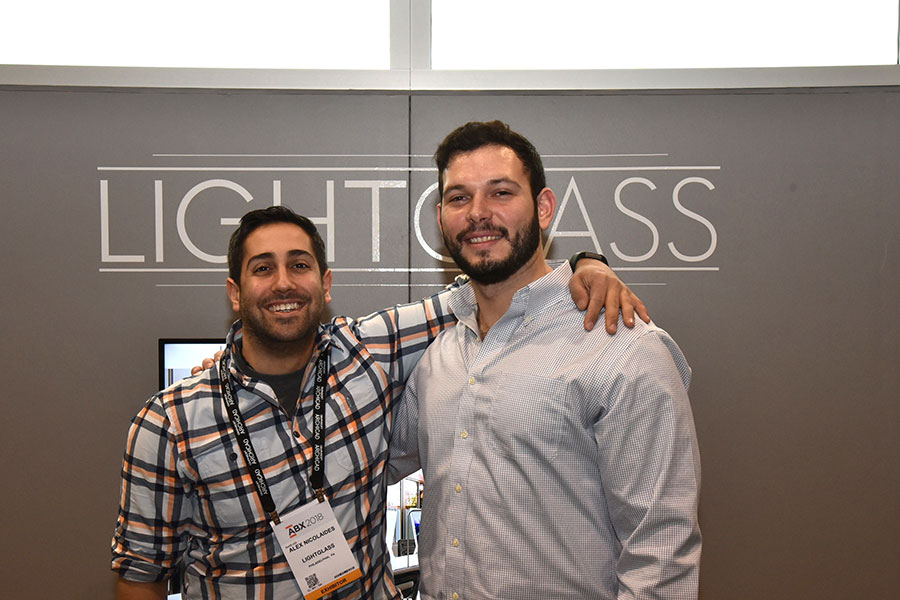
Alex Nicolaides & Ben Rapkin of Light Years
Besides the educational symposiums, there were show floor educational special events specific to different industries. In the symposium category I took in two highly technical events, one on Healthy Schools (air quality and environmental safety) and LEED 4.0 credits, and one on the climate change plans for South Boston. By now South Bostonians are getting familiar with the climate change report on South Boston published by the city this past October, and the representatives from the firms who undertook the project gave a full presentation. The panels were tested by veteran builders and architects with questions from intensely detailed to obscure- and passed with flying colors. The impending harbor doom aside, they tried not to geek out too much.
There were some workshops on softer subjects. How about “Design for Happiness”, or “Culture Defining Design?” While a good third of symposiums focused upon climate resiliency in New York and Boston, there were some very practical workshops like “Street to Suite, Lobby Repositioning’s Key Ingredients”, “Whole Building Ventilation” and “Tech Workplaces in an Agile World.” Some manufacturers sponsored their own forums, for example Safti-First, which designs fire safety glass, had a forum on fire rated glass, and Anderson had a workshop on how to select large doors and windows. Granted, these did not quite thrill the way that some of the luxury product booths did, but for builders getting up close to see products appropriateness the experience confirms reality better than reading spec sheets.

Peter Atwood of the Boston Architectural College
Almost everyone was drawn to the beauty of certain vendor displays. Cambria, the maker of natural quartz surfaces, not only showcased eye dropping product but came prepared with their own highly artful magazine: “Cambria Style.” The giant display surfaces of granite were enough to steal the show. Their film: “The Legend of Cambria” appears on their website with the slogan: “A Legend in Every Design” and boy do they mean it! There were also smaller innovative entrepreneurs like Light Glass, who create electrically illuminated diffused sky lights made to open up dark spaces, replete with color temperature settings to simulate different times of the day. Ponders Hollow, specializing in custom wood flooring and millwork had a magnificent display of how wood was utilized in construction and furnishing. Stoneyard who specializes in stone veneers in an infinite variety, showcased how their product could be used for both exteriors and interiors through precision finished designs. It didn’t hurt that much that the architectural photography accompanying these displays revealed houses quite obviously designed for the ultra-wealthy.
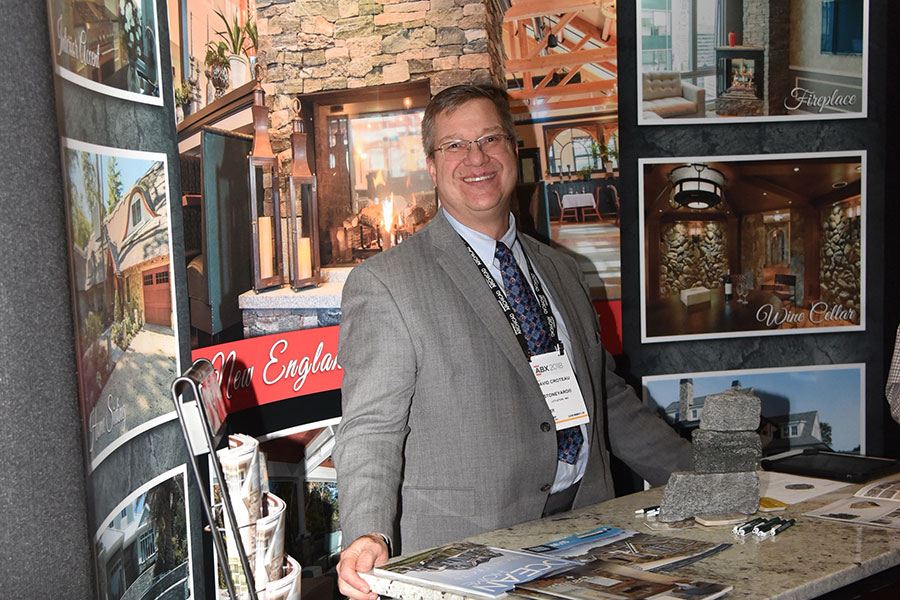
David Croteau of Stoneyard
On the more down to earth side there were graphic designers and software vendors as well. One local standout, Bluebird Graphic Solutions of Woburn had a great display that Project Developer Michael Torres explained was a collaboration with local students. Peter Atwood, Interim Director of Digital Media of Boston Architectural College was demonstrating some of their built objects- kind of Lego like building objects made on a box cutter that could be assembled into architecture. Some sustainable solutions for areas of the world (from Puerto Rico to Haiti to Africa) hit by storms or wars were presented in a pavilion focused upon resilient architecture. This event is admittedly a pricy ticket, but for any major design firm in New England, this show really has both the goods and educational street credentials to draw a crowd. The logistics were handled with aplomb: from the speedy check-in to decent food, and free publications, ABX outdid themselves once again.

